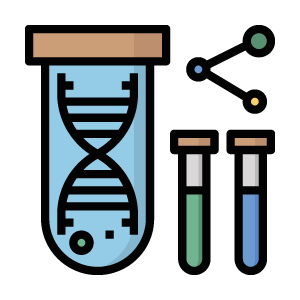RNA-sequencing (RNA-seq) is a powerful technology that allows scientists to study the transcriptome, or the set of all RNA molecules, in a biological sample. RNA-seq provides a comprehensive view of gene expression, enabling scientists to identify differentially expressed genes, alternative splicing events, and non-coding RNAs. RNA-seq has revolutionized the field of genomics and has become an essential tool for studying gene expression patterns in different organisms and cell types.
RNA-seq is based on the principle of next-generation sequencing (NGS), which allows scientists to sequence DNA and RNA in a high-throughput manner. The RNA-seq process starts by isolating and purifying the RNA from a biological sample. The RNA is then converted into cDNA, which is a DNA molecule that is complementary to the RNA. The cDNA is then fragmented and used as a template for NGS, which generates millions of short DNA sequences. These sequences are then aligned to a reference genome or transcriptome, and the number of reads that align to each gene or transcript is used to quantify the expression level of that gene or transcript.
One of the main advantages of RNA-seq is its high-resolution and high-throughput capability. RNA-seq provides a comprehensive view of the transcriptome, enabling scientists to identify differentially expressed genes, alternative splicing events, and non-coding RNAs. RNA-seq is also able to detect low-abundance transcripts, which is not possible with traditional microarray-based methods.
Another advantage of RNA-seq is its flexibility. RNA-seq can be applied to various types of samples such as single cells, tissues, and even whole organisms. It can also be used for different experimental designs such as time-course experiments, comparisons between different conditions or samples, and the identification of novel non-coding RNAs.
However, RNA-seq also has some limitations. The technology is relatively complex and requires specialized knowledge for data analysis. Additionally, RNA-seq can produce a large amount of data which can be difficult to process and interpret.
In conclusion, RNA-sequencing (RNA-seq) is a powerful technology that allows scientists to study the transcriptome, or the set of all RNA molecules, in a biological sample. RNA-seq provides a comprehensive view of gene expression, enabling scientists to identify differentially

